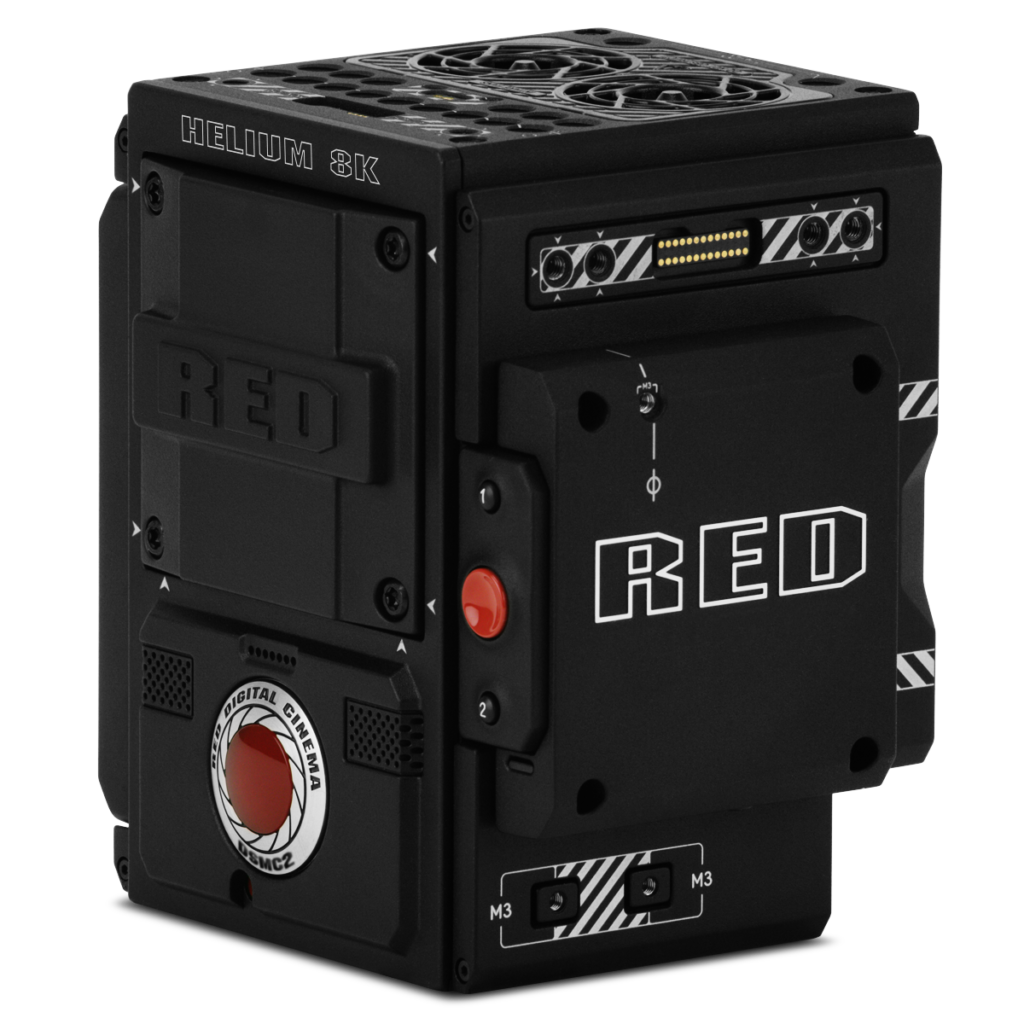
When RED DIGITAL CINEMA debuted the RED ONE 4K camera in 2007, it was an instant game-changer. Way ahead of it’s time in terms of resolution (keep in mind, high definition, or 2K, was just becoming widely accepted), and for under $30K, you could own your own digital movie camera that shot in RAW, meaning you could completely color-correct your footage in post, almost like shooting on 35mm film. And in many ways better. No film stock cost, and you didn’t need a studio to greenlight your film because it was affordable! Yes, it had some quirks like a sometimes unstable software system and sensor heat issues, but the image was unmatched in the digital world.
About 10 years later, RED has made another huge leap. 8K. That’s right, nearly 8 thousand vertical lines of resolution, or 7680×4320. The new 8K RED EPIC-W S35 HELIUM camera jumps ahead of the competition again. And that new “Helium” sensor? The new sensor received the highest sensor score ever, 108, by the DxOMark website. So basically, the new RED 8K cameras have amazing resolution, can shoot RAW, and unlike 10 years ago, pretty much all the kinks have been worked out. You can see why filmmakers are excited.
But are there drawbacks? Sure… With image resolution of this size, you are dealing with a lot of data, which means you will have to buy lots of storage. And with so much data to process, you will need a screaming fast computer. And if you want to shoot in 6K or 4K, you certainly can. But doing so will crop your image, which can actually be helpful for certain applications, but really frustrating if you want a wide shot in 4K.
When all is said and done, though, the 8K image is so beautiful and sharp, it’s easy to look past the problems. To me, each frame looks even better than a high resolution still photo from a DSLR — and the RED is taking 24 or 30 of those frames every second. Pretty mind-blowing.
But do you really need 8K right now in 2017? (I’m assuming you’re not shooting an epic Superhero film for theatrical release). I mean, most people don’t even have 4K TV’s yet, right? While this is certainly true, there are some huge advantages to shooting with so much resolution, even if you don’t plan on delivering your project in 8K. For starters, you can massively “punch in” to your 8K frame, and still have amazing resolution. So when doing an interview that you will deliver at HD or even 4K resolution, you can shoot in 8K, punch in to 4K for a close up, and then back to 8K. And your interview will still look crystal clear. Or how about image stabilization? You can shoot a tad wider than your intended final frame and the software can utilize the extra room to crop in and stabilize — and still easily be in 4K resolution. And by even starting at 8 and delivering in 4K, your 4K images will have a sharpness that 4K alone cannot deliver. And why not future-proof your content? It wasn’t too long ago that people were laughing at how crazy 4K sounded.
Can you show 8K on the internet? Well, technically, yes. There are some crazy work-arounds you can do to post 8K to YouTube. Although you need some serious bandwith and computing power to watch it at this point. Certainl,y You Tube and Vimeo are easily uploading 4K content now which looks amazing — and 8K can easily be down-converted to 4K. But what about TV? Most networks are still airing in 720p or 1080. Few have even made it to 4K. And are 8K TV’s around the corner? Not necessarily, but for all the reasons mentioned above… Why not shoot in 8K when you can? I mean, I haven’t been this excited since… Well, 2007.
My company, THE BIRDHOUSE, is now renting the RED EPIC-W S35 HELIUM. Check it out!